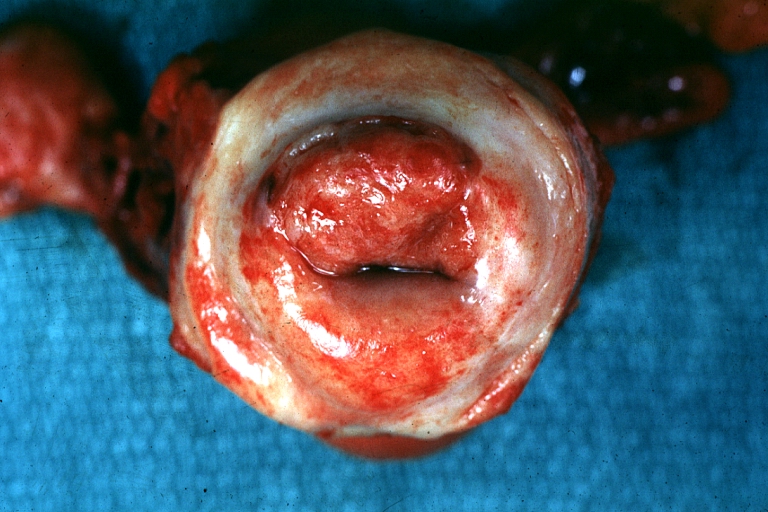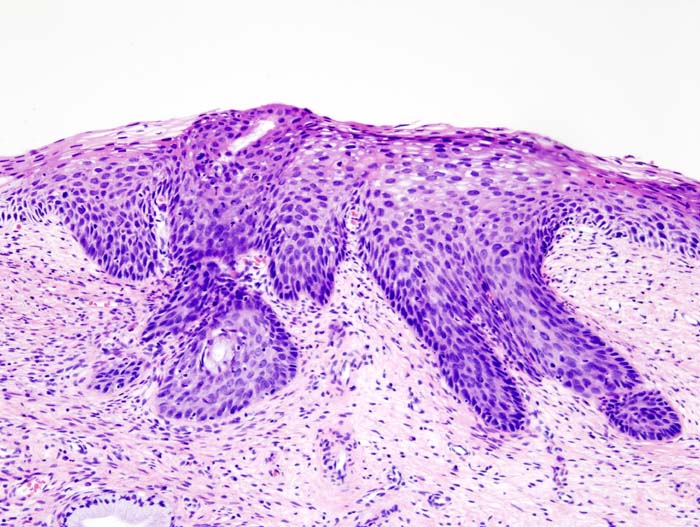Cervical cancer pathophysiology
|
Cervical cancer Microchapters |
|
Diagnosis |
|---|
|
Treatment |
|
Case Studies |
|
Cervical cancer pathophysiology On the Web |
|
American Roentgen Ray Society Images of Cervical cancer pathophysiology |
|
Risk calculators and risk factors for Cervical cancer pathophysiology |
Please help WikiDoc by adding more content here. It's easy! Click here to learn about editing.
Editor-In-Chief: C. Michael Gibson, M.S., M.D. [1]}
Pathophysiology
Pathologic types
Cervical intraepithelial neoplasia, the precursor to cervical cancer, is often diagnosed on examiniation of cervical biopsies by a pathologist. Histologic subtypes of invasive cervical carcinoma include the following:
- squamous cell carcinoma (about 80-85%)
- adenocarcinoma
- adenosquamous carcinoma
- small cell carcinoma
- neuroendocrine carcinoma
Non-carcinoma malignancies which can rarely occur in the cervix include
Microscopic Pathology
-
Uterus: Cervical Carcinoma: Gross, an excellent example of tumor (labeled as invasive)
Image courtesy of Professor Peter Anderson DVM PhD and published with permission © PEIR, University of Alabama at Birmingham, Department of Pathology -
Histopathologic image (H&E stain) of cervical intraepithelial neoplasia.
=Video
{{#ev:youtube|J3kULzKGzws}}

